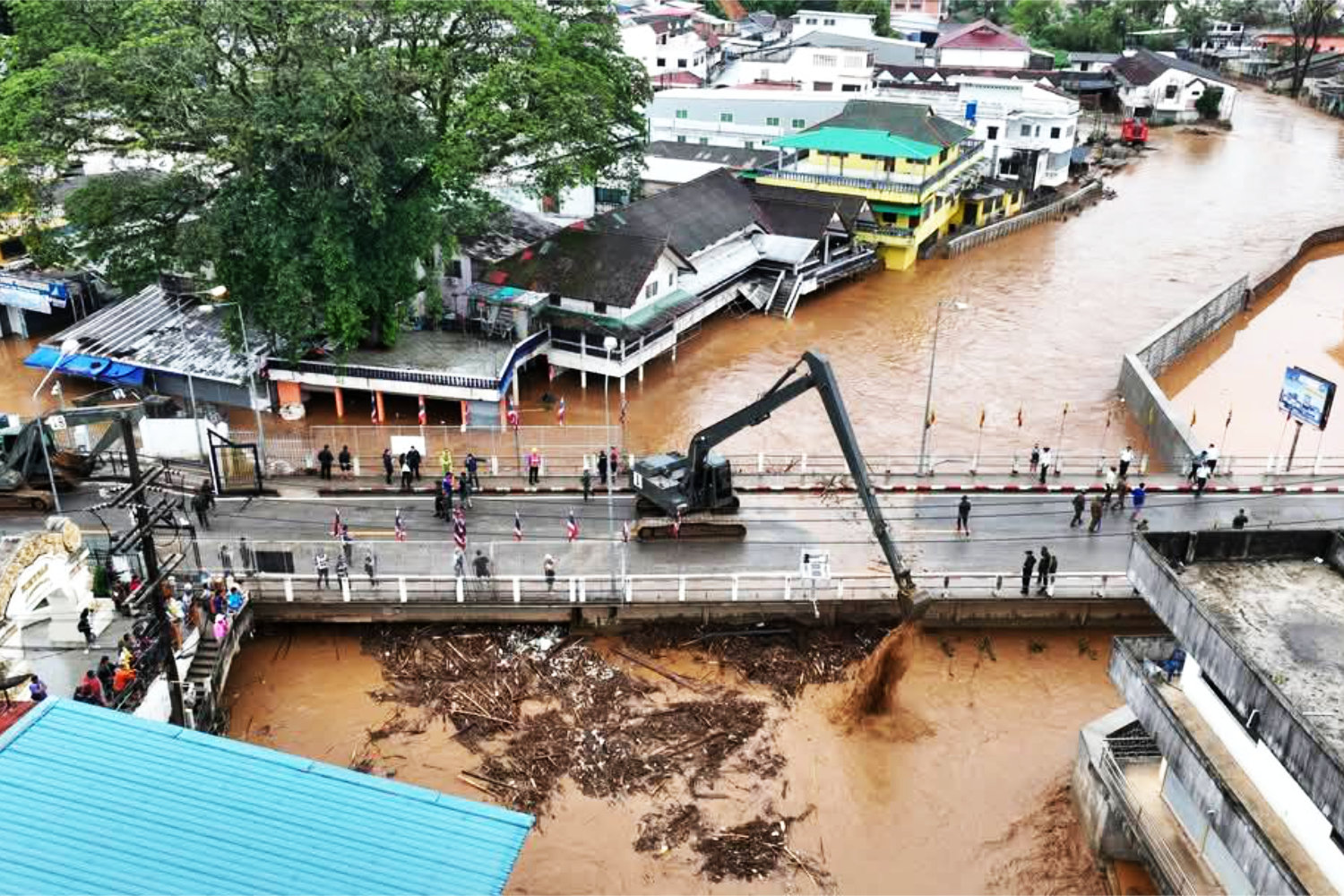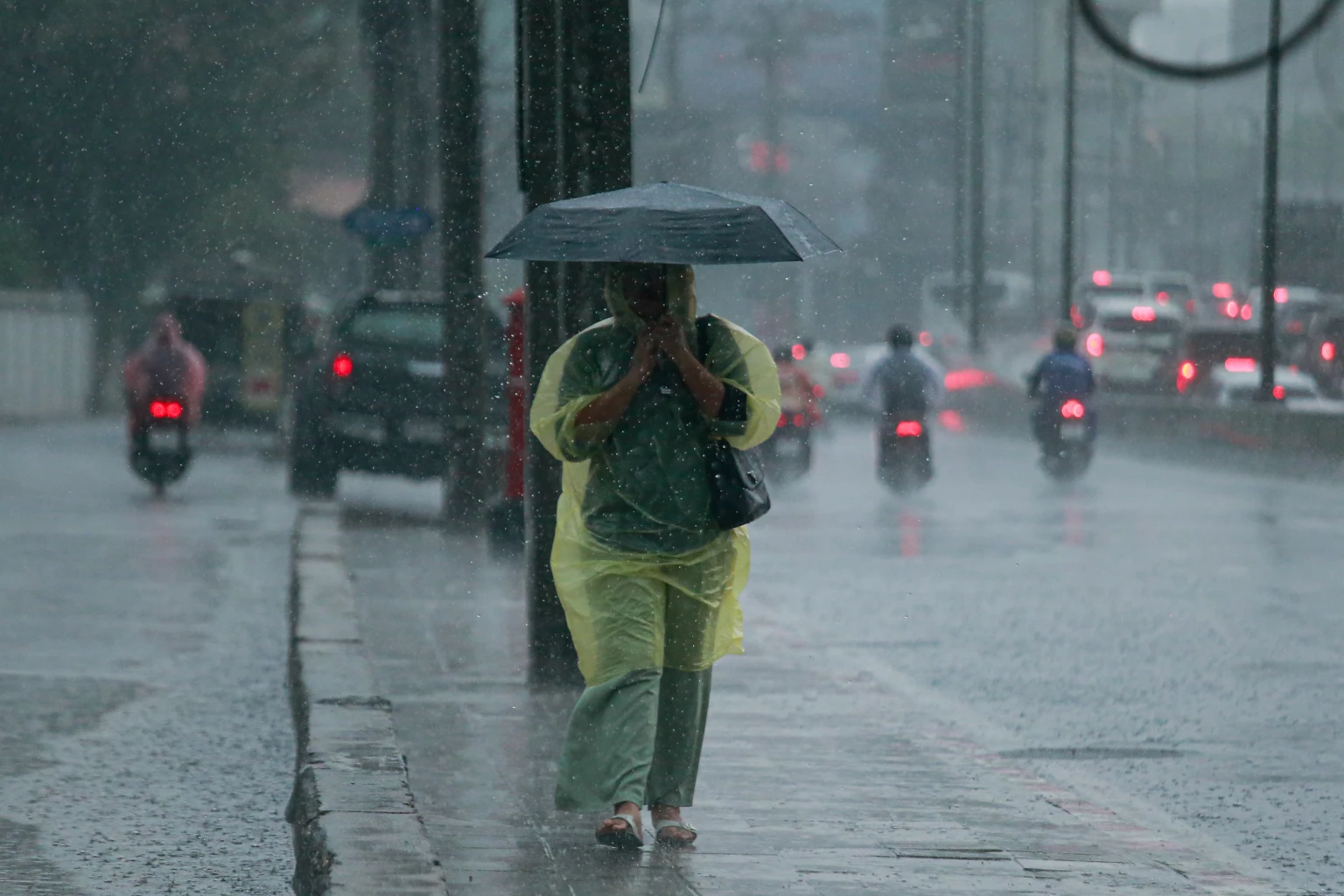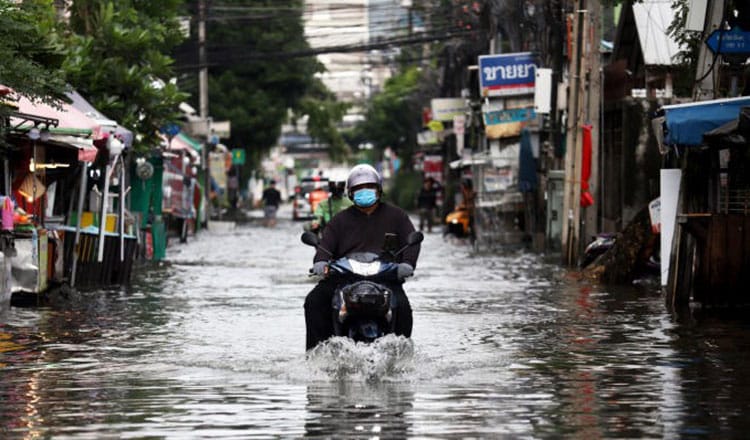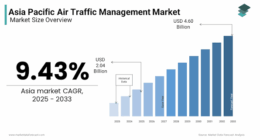Mae Sai’s Flooding Crisis
Recurring Devastation in Chiang Rai
Mae Sai, a bustling border town in Chiang Rai opposite Myanmar’s Tachileik, faces severe annual flooding, with economic losses reaching millions in 2024. The Sai River’s overflow, worsened by upstream deforestation and mining in Myanmar, has flooded the town twice in May 2025 alone, threatening its 20,000 residents and way of life.
Environmental Culprits Upstream
Deforestation and Mining Impacts
Large-scale deforestation from gold and rare earth mining, alongside monocrop plantations in Myanmar, exacerbates flooding in Mae Sai. These activities reduce the forest’s ability to absorb water, sending torrents of mud and water into the town, highlighting the urgent need for cross-border environmental solutions in 2025.
Urban Expansion Worsens Damage
Riverbank Encroachment Issues
Mae Sai’s growth has led to illegal constructions narrowing the Sai River’s natural waterway, intensifying flood impacts. Municipal clerk Wannasin Keerakad notes that even 60mm of rainfall now causes significant damage due to sediment buildup, underscoring the need for infrastructure upgrades in 2025.
Proposed Flood Mitigation Measures
Floodwalls and River Dredging
To combat flooding, Mae Sai requires a 3.6-kilometer floodwall and increased river flow capacity, with 74.8 million baht invested to dredge the Sai and Ruak Rivers over 30.9 kilometers, set for completion in July 2025. These efforts aim to protect the town’s assets and residents from annual deluges.
Challenges with Floodwalls Alone
Need for Comprehensive Planning
Anek Siripanichgorn, a natural disaster expert, warns that a floodwall may not suffice due to the heavy mudflows from Myanmar’s deforested mountains. He advocates for special town planning, including water retention zones and floodways, to safeguard Mae Sai from recurring floods in 2025.
Relocation and Adaptation Strategies
Learning to Live with Floods
Mae Sai may need to adapt to annual flooding or consider relocating vulnerable areas, as suggested by experts. Residents have agreed to demolish riverbank homes, but government support for new housing is crucial to preserve the town’s community and economy in 2025.
Cross-Border Environmental Concerns
Asean’s Limited Cooperation
Tara Buakamsri from Greenpeace Southeast Asia highlights the inadequacy of Asean’s voluntary environmental agreements, like the haze pollution accord, in addressing Mae Sai’s transboundary flooding. Stronger regional action, including tackling mining pollution in Myanmar, is vital for Thailand’s environmental security in 2025.
Community-Driven Solutions
Early Warning Systems and Cooperation
Local cooperation between Mae Sai and Tachileik is key to mitigating flood losses. Developing early warning systems and enforcing a 40-meter no-construction buffer zone along the river can protect both towns. Engaging the Mekong River Commission to address upstream issues could further alleviate flooding in 2025.









